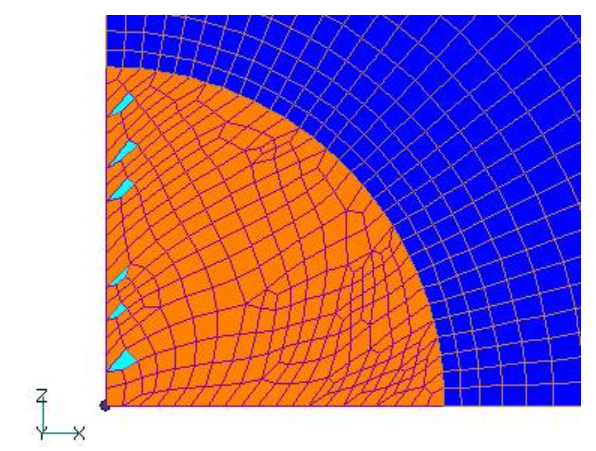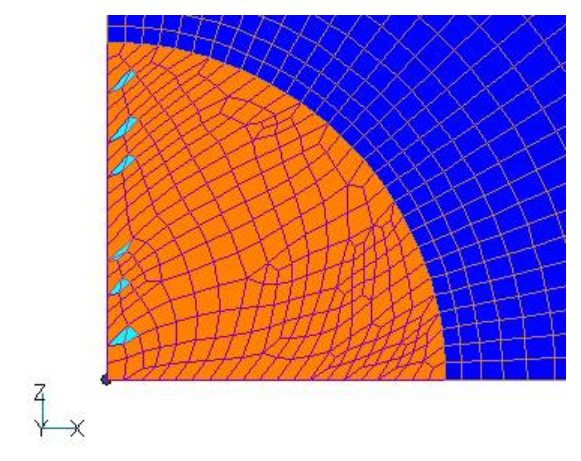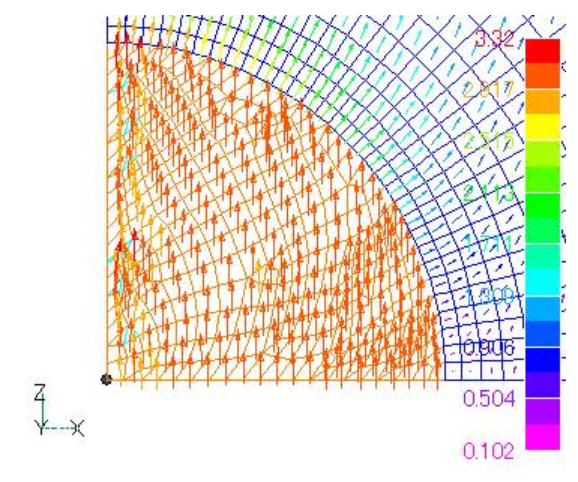Division of a quadrangle element tangent to an axis at a single point into triangular elements
- TOP >
- Analysis Examples by Functions (List) >
- Division of a quadrangle element tangent to an axis at a single point into triangular elements
Summary
In EMSolution, when performing axisymmetric calculations, a two-dimensional mesh is extruded in the direction of rotation to perform a three-dimensional analysis. Conventionally, a quadrangle element tangent to the axis at a single point cannot be extruded in a rotational direction, and we have asked our customers to create meshes so that such an element is not created. However, such elements were inevitably created when performing automatic quadrangle meshing, and there were many cases where EMSolution could not be performed because of this. Now, we have decided to automatically divide quadrangles tangent to an axis into triangles within EMSolution.
Explanation
Examples are shown in Figs. 1 and 2. Fig. 1 shows a two-dimensional mesh generated by automatic mesh partitioning of the inner part of a sphere. Some quadrangle meshes tangent to the axis is generated. In the past, generating such a mesh would output a warning and abort execution. With this improvement, the mesh shown in Fig.1 is automatically converted to the mesh shown in Fig. 2. The shorter diagonal divides the quadrangle into two triangles. The result is output as a new mesh in post_geom.
Fig. 3 shows the results of a magnetostatic field analysis based on this mesh. A sphere with a radius of 0.1 m and a specific permeability of 1000 is subjected to a 1 T uniform magnetic field. Although the magnetic field is slightly fluctuating due to element distortion, a nearly uniform magnetic field is obtained. This is applicable not only to axisymmetric calculations, but also to rotational extrusion with GIOMETRY=2,3 and to extrusion in the rotational direction (GEOMETRY=4) using 2D_to_3D. We believe this will reduce the burden on the customer even slightly.
The rest of this page is for members only.
Analysis Examples by Functions
Two dimensional analysis
- Analysis by two-dimensional approximation
- Computation of two-dimensional axisymmetric problems using pyramid (quadrilateral pyramid) elements
- Improvements to near-axis problems in axisymmetric calculations
- Division of a quadrangle element tangent to an axis at a single point into triangular elements
- Magnetic field analysis of solenoid coil
©2020 Science Solutions International Laboratory, Inc.
All Rights reserved.





